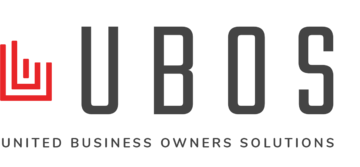6 Tax Planning Strategy Concepts for Beginners
Tax planning is simply analyzing and arranging your financial situation to capitalize on tax breaks and reduce tax liabilities effectively and legally. Although tax rules appear complicated, you need to take time to know and apply them for your benefit when filing your taxes. In this article, we will cover some key tax planning strategy concepts for beginners. These include:
1. Know your tax bracket
The initial step to start your tax planning process is to know your tax bracket. Know you are in what federal tax bracket to plan your future well.
Unlike most countries in the world, there is a progressive tax system in the United States. This progressive system has different tax rates for different earners. Higher tax rates apply to those with higher taxable incomes, while lower tax rates apply to those will lower taxable income. Currently, the federal income tax brackets are seven. There are 37%, 35%, 32%, 24%, 22%, 12%, and 10%. Irrespective of your tax bracket, you might not pay that rate on your whole income.
Here are the reasons:
- Tax is not calculated by multiplying your taxable income with your tax bracket rate. Instead, the U.S. government has a way of dividing your taxable income into groups, which are then taxed as per the rate.
- To know your taxable income, you need to first subtract all applicable tax deductions.

2. Understand the difference between tax credits and tax deductions
The best parts to use in preparing your tax return are tax credits and tax deductions. Although they work in different ways, they both cut your tax bill. Understanding their differences is vital to creating an efficient tax planning strategy, which reduces your tax bill. Tax credits offer you a dollar-for-dollar reduction for your tax bill. They lower your tax bill with the stated amount.
Tax deductions are particular incurred expenses, which you need to subtract from your taxable income. They determine your income that is subject to taxes.
3. Be aware of the popular tax credits and deductions.
There are many tax credits and deductions available for U.S. citizens. However, they all have different eligibility requirements. Some of the main ones are:
- Charitable contributions.
- Adoption credit.
- Child and dependent care credit.
- Medical expenses.
- Child tax credit.
- Earned income tax credit.
- Mortgage interest.
- Capital loss deduction.
- American opportunity credit.
- Property taxes.
- Saver’s credit.
- Home office expenses.
Check about each of the above tax credits and deductions to know if you qualify.

4. Know the tax records you need to keep
It is critical to keep tax returns and documents used to complete the filing of returns for any auditing. You should keep your records for a long time because the IRS is free to audit your returns after three years. Likewise, you learn to keep your tax records for three years when you file a claim for a refund or credit after filing the original return.
Generally, keeping records longer is a key tax planning strategy concept. In some cases, the IRS has a length limit to audit you. For example:
- ndefinitely when you fail to file a tax return or commit a tax fraud.
- Seven years if you write off your loss from “worthless security.”
- Six years when you under report your income by over 25%.
Some of the tax records and documents that you need to keep include:
Retirement Accounts
- Annual statements.
- Distribution records.
- 401(k) statements.
- Form 8606(non-deductible IRA contributions).
- Form 5498.
Income
- K-1 forms.
- W-2 form(s).
- Brokerage statements.
- 1099-MISC.
- Alimony received.
- 1099-DIV.
- 1099-INV.
Home
- Property statements.
- Insurance records.
- Purchase and sales invoices.
- Closing statements.
Expenses & Deductions
- Gambling losses.
- Statements from charities.
- Alimony paid.
- Invoices.
- Receipts.
Other investments
- Annual statements.
- Transaction data (sale receipts or individual purchases).
5. How to take the standard deduction vs. Itemizing
The other major tax planning strategy concept is deciding whether to take the standard deduction or itemize. The choice you make has a greater impact on your tax bill.
What is the standard deduction?
It is simply a flat-dollar and does not have questions about the tax deduction. Most taxpayers take the standard deduction instead of itemizing because its tax preparation is faster. The amount of standard deduction is set by Congress, which is also involved in its adjustment for inflation. You should check with the IRS about the standard deduction you qualify for based on your filing status. For example, the standard deduction for single is different from that of married but filing together.
What does ``itemize`` mean?
Itemizing tax returns allows you to take all the qualified individual tax returns one by one, rather than taking the standard deduction. Most people itemize their returns if the sum of their itemized deductions is more than the qualified standard deduction. Tracking tax deductions through the year is a key tax planning strategy.
Nevertheless, itemizing takes longer to file your taxes because you need to prove that you qualify for the deductions. To claim any of your itemized deductions, you must use the IRS schedule. To know your eligible deductions and if their sum is more than that of the standard deduction, use a qualified tax advisor or tax software.
6. Learn the basics to cut your tax bill
Credits and deductions are great means to cut your tax bill. However, you should learn about other tax planning strategies you can use to cut your tax bill. Here are some common taxes planning strategies:
Maximize your health savings accounts
The health savings accounts are exempted from tax to enable you to pay your medical expenses. All contributions made to health savings accounts are tax-deductible, and their withdrawals are also tax-free. But, only if you will use the money for qualified medical expenses.
Put money in a 401(k)
Some employers provide 401(k) savings and investing plans, which offer you a tax break on all money you set aside as retirement cash. Your 401(k) contributions from your paycheck are tax-free.
Tweak your W-4
A W-4 form informs your employer of the tax amount they will withhold from your paycheck. In short, your employer remits your tax to the IRS. By claiming more allowances on your W-4, less money will go towards taxes and vice versa.
Open a 529 account
The 529 accounts are savings accounts operated by some states and educational institutions to help people save for college expenses.
For more information about UBOS, you can refer to our website https://ubos.pro/ or contact us at https://ubos.pro/contact/ and get help with filing taxes.


Your Comment
Leave a Reply Now